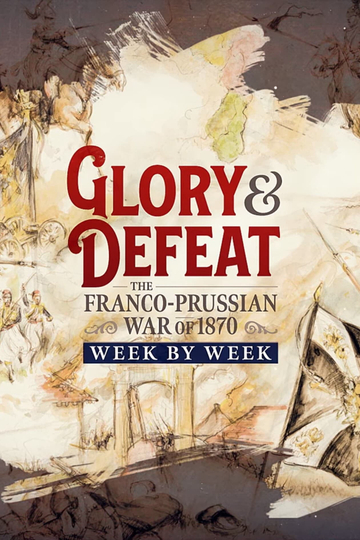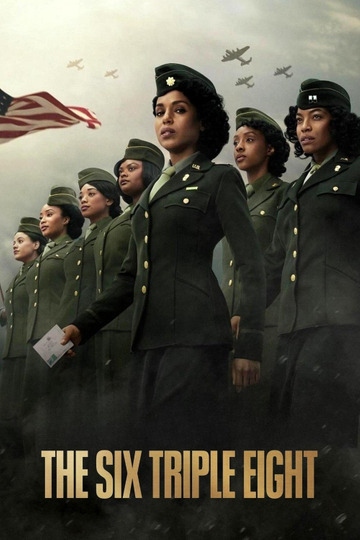Season 4 Episodes
1. Search and Destroy: Vietnam War Tactics 1965-1967
In 1965, tens of thousands of US troops are heading for war in Vietnam. Backed up by B-52 bombers, helicopters and napalm, many expect the Viet Cong guerillas to crumble in the face of unstoppable US firepower. Instead, in the jungles and swamps of Vietnam, the Americans discover combat is an exhausting slog in which casualties are high and they rarely get to fire first.
2. The Deadliest Job Of WW2? - US Bomber Crews 1943
Fall 1943, Allied bombers are ramping up their daytime raids of Nazi German cities and industry. The bomber crews of the US 8th Air Force will pay the price against the German Luftwaffe. Formations such as the “Bloody Hundredth” 100th Bomber Group suffer some of the highest loss ratios of the Second World War – while in 1943 German war production continues to grow. So, let’s have a look why the 8th Air Force weren’t Masters of the Air over Germany quite yet.
3. Why Germany Lost the Battle of the Atlantic
In March 1943, German U-boats are on the attack – they sink 108 Allied vessels that month alone. Some Allied officials fear a German victory in the Atlantic is imminent. If the Allies lose the Atlantic, Britain loses its lifeline – and maybe even the war. But by May 1943, it will be the U-boats limping home in defeat. So how, in just two months, did the U-boats go from hunters to hunted?
4. Why the US Lost the Tet Offensive
After years of boots on the ground and bloody combat in Vietnam, US officials are publicly confident. The strategy of eliminating the Viet Cong is working. The North Vietnamese communist forces are on their last legs and victory is only a matter of time. Or so they say. But as 1968 and the traditional lunar new year festivities begin, US and South Vietnamese troops find themselves on the receiving end of a formidable North Vietnamese surprise attack: The Tet Offensive.
5. Why the Allies Lost The Battle of France
In May 1940, Nazi Germany attacks in the West. The Allied armies of France, Britain, Belgium, and the Netherlands have more men, guns, and tanks than the Germans do – and the French army is considered the best in the world. But in just 6 weeks, German forces shock the world and smash the Allies. So how did Germany win so convincingly, so fast?
6. Britain's Weird Vietnam War
Fall 1945: the Second World War is over, but there is fresh fighting in Vietnam. Now, former enemies become allies as British-Indian troops, French Commandoes, and surrendered Japanese soldiers join in a rag-tag alliance against Ho Chi Minh’s Communists in Saigon. The outcome will shape Vietnam’s future for decades to come, in Great Britain’s weird Vietnam War.
7. 1943: Turning Point of WW2 in Europe
The so-called forgotten year of WW2 sees the Allies push the Germans out of North Africa, Sicily, part of Italy, the Atlantic, and smash the Wehrmacht backwards from the Volga and Kursk in Russia to the Dnipro in Ukraine while Allied bombers begin to relentlessly bomb the Reich itself.
8. Nixon's Vietnam War: Why the US Left Vietnam
With violent anti-war protests at home and discipline problems on US bases, President Nixon promises to withdraw American troops from the Vietnam War. But that doesn’t mean an end to the fighting. As US troop numbers drop, the war expands across borders and in the air as more weapons are pumped into the South
9. Who Really Won the Korean War?
Only five years after the end of WW2, the major nations of the world are once again up in arms. A global UN coalition and an emerging Chinese juggernaut are fighting it out in a war that will see both sides approach the brink of victory - and defeat.
10. How Did Israel End Up With Gaza and the West Bank? Six-Day War 1967
In just six days in 1967 Israel managed to decisively defeat Egypt, Jordan and Syria in the Six Day War. In the process they expand the territory they control with the Golan Heights, Sinai, the West Bank and Gaza.
11. Why the US Lost the Vietnam War
In late April 1975, dramatic images from Saigon are beamed across the world. North Vietnamese troops proclaimed final victory. Just how did the US lose the Vietnam War?
12. Bio-Weapons in WW2: Japan's Revenge for Doolittle Raid
During Japan's war against South-East Asia during the Second World War, China was one of the earliest battlefields. The nationalists under Chiang Kai-Shek pleaded to get Allied support against the Japanese. But being part of the alliance would have disastrous consequences for the Chinese.
13. The Indochina War 1945-1954
The Indochina War is a pivotal conflict in the Cold War emerging from the end of the Second World War. When the former imperial power France tries to reclaim their former colony of Indochina, they encounter resistance in today's Vietnam by the Viet Minh under Ho Chi Minh.
14. Could Germany Invade Britain in WW2? (Operation Sea Lion)
Summer 1940. The United Kingdom is gripped by the fear of a German invasion. Even if the Luftwaffe secures the sky over Britain, could Germany's Operation Sea Lion ever really work?
15. Forgotten Armies of the Vietnam War: Australia, Korea, China, USSR
The Vietnam War is mainly remembered as a conflict between the Vietnamese and the United States. But both sides received direct and indirect support from other countries.
16. Desert Storm: Mission Accomplished or Missed Opportunity?
When Saddam Hussein invaded Kuwait in the summer of 1990, he didn't anticipate a massive international backslash and unanimous Security Council response. Soon a broad military Coalition under leadership of the United States assembled and kicked the Iraqi Army out of Kuwait. In the aftermath several Iraqi groups rose up against Saddam but the Coalition didn't support a regime change.
17. Laos and Cambodia: Forgotten Fronts of the Vietnam War
Despite its name, the Vietnam War is not confined to the territory of North or South Vietnam. As the US and North Vietnamese escalate operations, the war crosses borders, merges with neighboring conflicts and takes on different forms – from CIA-directed secret armies in Laos, to genocide in Cambodia.
18. CIA Coup For Oil? - The 1953 Iran Coup
In 1953, Iran is at a crossroads. After decades of interference by foreign powers eager to exploit its oil reserves, the government decides it will throw them out and take control of the country’s wealth. But with the super powers’ Cold War paranoia and thirst for oil, it won’t be easy – especially once the CIA gets involved.
19. Winter War 1939-40 - Soviet Invasion of Finland
November 1939. Germany and the Soviet Union have conquered Poland, and Germany is at war with France and Britain. Moscow is free to do as it pleases in Eastern Europe and sets its sights on Finland – but the Winter War will be a nasty surprise for Stalin.
20. The Vietnam War 1955-1975
When the US enters the Vietnam War, it’s confident in its military might, but it soon finds itself struggling with an underestimated enemy, a widening war, and political turmoil at home. North Vietnam has been fighting for an independent and unified Vietnam for decades. As both sides clash in the jungles of Vietnam, Laos, and Cambodia, the war becomes a quagmire in which military power alone cannot secure victory.
21. Battle of Saipan 1944: Total War in the Pacific
In June 1944, an armada of warships and landing craft is getting ready for D-Day. Thousands of American soldiers are about to attack a prepared enemy with formidable defenses. But this isn’t Normandy, this is the island of Saipan. And the bloody battle there will bring total war to the Pacific.
22. Downfall: The Battle of Berlin 1945
April 1945. After nearly six years of war, the Red Army stands massed on the banks of the Oder River in eastern Germany. The Nazi capital and Hitler’s bunker are just 60km away, but the Nazi Party and the Wehrmacht are preparing to fight to the bitter end in the final struggle of WW2 in Europe – the Battle for Berlin.


























